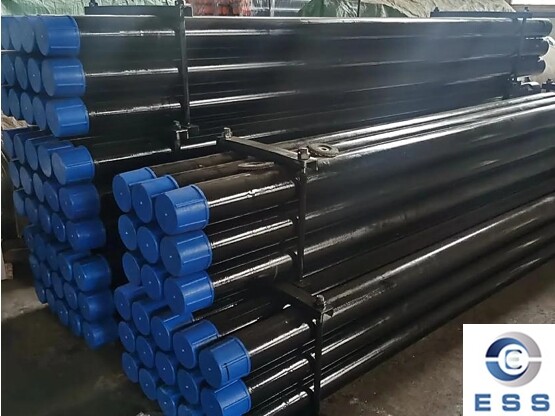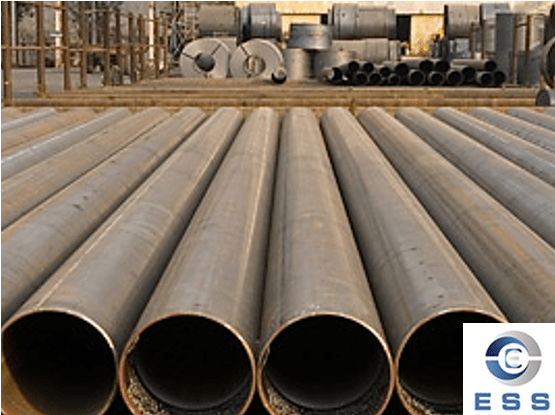
Drill pipe is an indispensable tool in oil, gas, and geothermal drilling. It is not only
used to transmit the power of the drilling rig, but also to transport drilling
fluid to ensure the smooth progress of the drilling process. This article will
explore the application of drill pipe in oil, gas, and geothermal drilling, as
well as the special requirements for drill pipe in different application
scenarios.
Drill pipe applications in oil and gas drilling
In oil and gas drilling, the main function
of the drill pipe is to transmit the power and torque of the drilling rig to
push the drill bit into the ground. In addition, the drill pipe is also used to
transport drilling fluid to help cool the drill bit, carry cuttings, and keep
the well wall stable. The following requirements are usually required:
1. Material strength
Oil and gas drilling usually requires
high-strength drill pipes to cope with high pressure and high torque
environments.
2. Corrosion resistance
In oil and gas wells containing hydrogen
sulfide (H₂S) and carbon
dioxide (CO₂), drill pipes
need to have good corrosion resistance.
3. Size and length
The size and length of the drill pipe are
selected according to the depth of the well and the geological conditions.
Usually, longer drill pipes are used for deep well drilling.
Drill pipe applications in geothermal
drilling
Geothermal drilling has similarities with
oil and gas drilling, but there are also significant differences. Geothermal
drilling is mainly used to develop underground hot water or steam resources.
The drill pipe is also used to transmit power and transport drilling fluids in
this process. The following requirements are usually required:
1. High temperature adaptability
In geothermal drilling, the drill pipe
needs to adapt to higher temperature environments. For example, the temperature
of geothermal wells may exceed 300°C, which places
higher requirements on the material and design of the drill pipe.
2. Corrosion resistance
The fluid in geothermal wells is usually
highly corrosive, and the drill pipe needs to have good corrosion resistance.
3. Thermal cycling stress
In geothermal drilling, the drill pipe will
experience cycles from high temperature to low temperature, which may cause
material fatigue and stress concentration.
Comparison of oil, gas and geothermal
drilling
1. Geological conditions
Oil and gas applications are usually
carried out in plain areas or offshore, where the geological conditions are
relatively stable.
Geothermal applications are mostly carried
out in volcanic areas, where the geological conditions are complex and the
terrain is undulating.
2. Fluid characteristics
Oil and gas applications mainly deal with
oil and gas. These fluids exist under high pressure and need to balance the
formation pressure by increasing the density of the drilling fluid.
Geothermal applications mainly deal with
hot water or steam. The pressure and temperature of these fluids are greatly
affected by the formation temperature, and the temperature in the well needs to
be lowered by continuously injecting cold water.
3. Well control technology
Oil and gas well control mainly prevents
formation fluids from entering the wellbore by maintaining the static pressure
of the drilling fluid in the well.
Geothermal well control needs to consider
the characteristics of high-temperature fluids and continuously inject cold
water to lower the temperature in the well and prevent steam from forming.
Summary
Drill pipe, as an OCTG pipe, plays
a key role in oil, gas and geothermal drilling, but there are significant
differences in the technical requirements for drill pipes in different
application scenarios. Oil and gas drilling requires high-strength,
corrosion-resistant drill pipes, while geothermal drilling focuses more on
high-temperature adaptability and corrosion resistance.
Read more: Size of Drill Pipe or How Many Types of Drill Pipe Threads Are There?













 Eastern Steel Manufacturing Co.,Ltd not only improve product production and sales services, but also provide additional value-added services. As long as you need, we can complete your specific needs together.
Eastern Steel Manufacturing Co.,Ltd not only improve product production and sales services, but also provide additional value-added services. As long as you need, we can complete your specific needs together.










